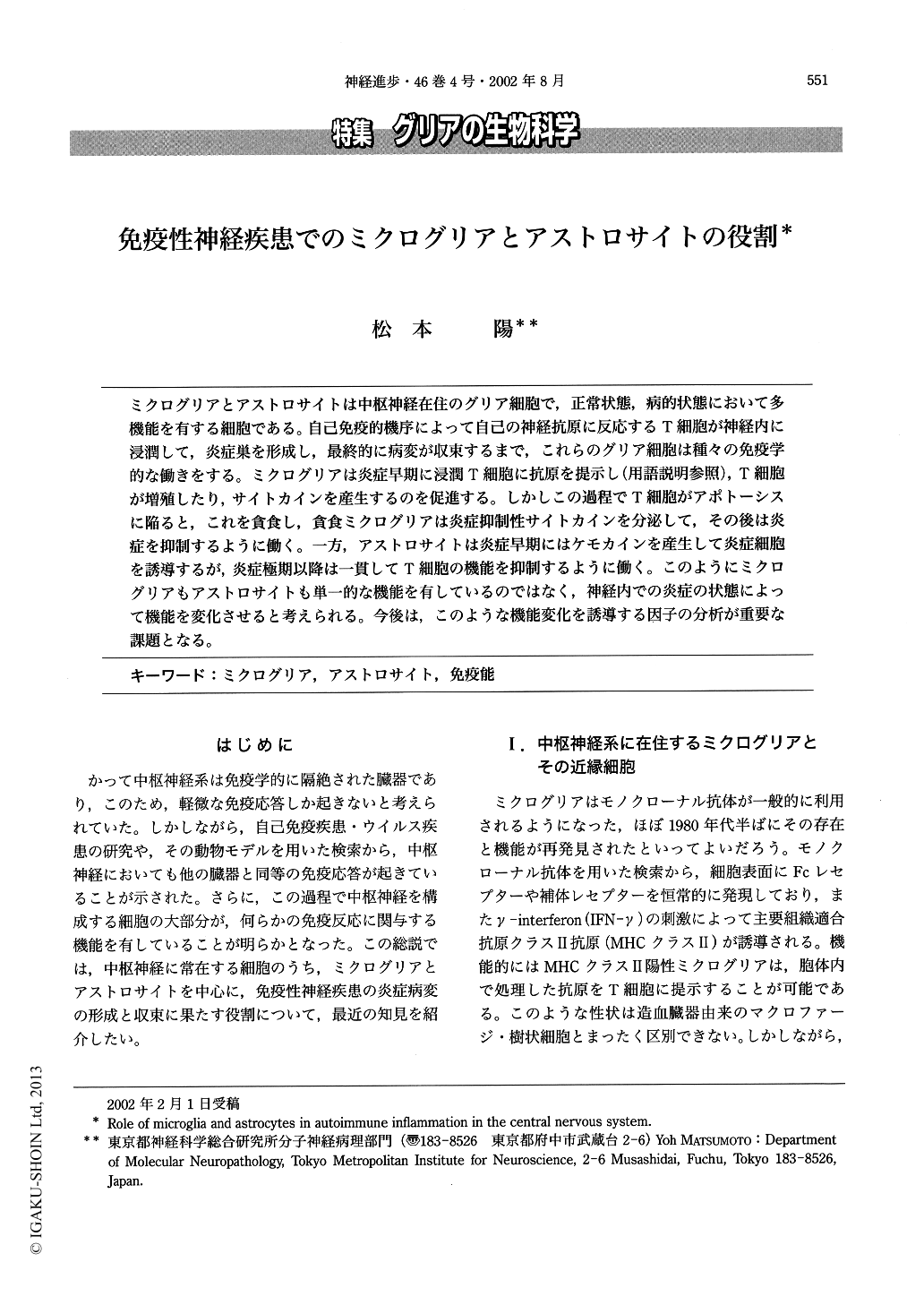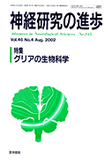Japanese
English
- 有料閲覧
- Abstract 文献概要
- 1ページ目 Look Inside
ミクログリアとアストロサイトは中枢神経在住のグリア細胞で,正常状態,病的状態において多機能を有する細胞である。自己免疫的機序によって自己の神経抗原に反応するT細胞が神経内に浸潤して,炎症巣を形成し,最終的に病変が収束するまで,これらのグリア細胞は種々の免疫学的な働きをする。ミクログリアは炎症早期に浸潤T細胞に抗原を提示し(用語説明参照),T細胞が増殖したり,サイトカインを産生するのを促進する。しかしこの過程でT細胞がアポトーシスに陥ると,これを貪食し,貪食ミクログリアは炎症抑制性サイトカインを分泌して,その後は炎症を抑制するように働く。一方,アストロサイトは炎症早期にはケモカインを産生して炎症細胞を誘導するが,炎症極期以降は一貫してT細胞の機能を抑制するように働く。このようにミクログリアもアストロサイトも単一的な機能を有しているのではなく,神経内での炎症の状態によって機能を変化させると考えられる。今後は,このような機能変化を誘導する因子の分析が重要な課題となる。
It is recently known that glial cells in the central nervous system (CNS) have immunological functions when autoimmune inflammation takes place in the CNS. Microglia, macrophage-mimicking resident cells, were first shown to have antigen-presenting ability to neuroantigen-specific T cells, suggesting that microglia promote autoimmune inflammation especially during the early stage of the disease. Moreover, recent studies demonstrated that microglia that had phagocytized apoptotic T cells secrete more IL-10 and TGF-β and down-regulate inflammation at later stages of the disease.

Copyright © 2002, Igaku-Shoin Ltd. All rights reserved.


